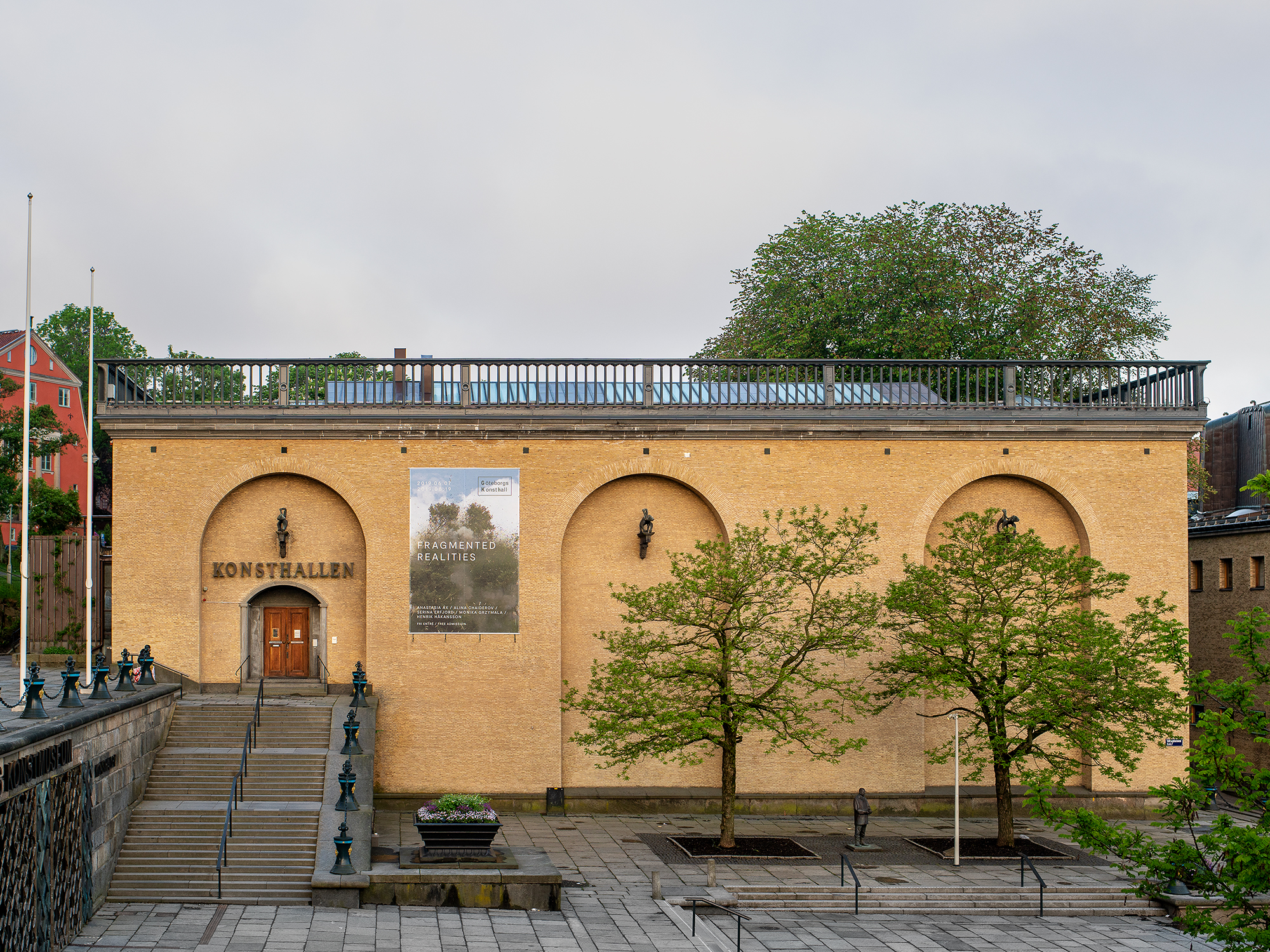Göteborgs Konsthall
Göteborgs Konsthall is a well-known institution in Gothenburg’ s cultural scene. Built in 1923, the art center is accommodated in a classicistic brick building in the central square of the city, Gotaplatsen. Approximatley
five exhibitions of contemporary art are on show here annually and every other year the art biennial is a returning guest.
Lisa Rosendahl, curator GIBCA 2019 Part of the Labyrinth, about the presentation at Göteborgs Konsthall:
Göteborgs Konsthall opened in 1923 and is a typical example of a white cube gallery. The white-painted gallery space with no windows onto the outside is a spatial manifestation of the idea that man can create a distance between himself and the surrounding world in order to thereby critically observe and reshape it. The white cube architecture stages some of modernity’s key operational strategies–separation, autonomy, and abstraction–whose consequences include both freedom and violence.
In keeping with convention, the gallery space is restored to its blank purity after every exhibition in order to make way for the next show without leaving traces of the preceding one. This creates the illusion that new worlds can continually emerge as if from a vacuum. The white cube’s method of tearing down one world in order to create a new one is recognizable from utopian thinking, revolutionary political movements, and the artistic avant-garde—but also from the destructiveness of colonialism, imperialism, and industrial capitalism.
The myth propagated by the white cube is that the space is in itself neutral and does not affect the content. Like the white gaze and the blank white page, the white cube is an expression of a cultural identity that speaks of itself in terms of non-identity.
The exhibition at Göteborgs Konsthall takes the white cube’s double-edged symbolism of freedom and violence as it’s starting point. Several of the artworks challenge modernity’s binary system of either/or opposites and show how existence
is rather characterized by different forms of entanglement and ways of being both/and.
Artists
Contact
Entrance:
Free
Opening hours:
Tue and Thu 11am–6pm
Wed 11am–8pm
Fri–Sun 11am–5pm
Address:
Götaplatsen
412 56 Göteborg
Telephone:
+46(0)31-61 50 40
Webpage:
www.konsthallen.goteborg.se
Public transport stops:
Berzeliigatan
Valand
Götaplatsen

